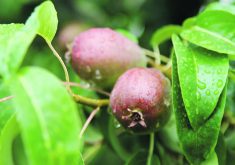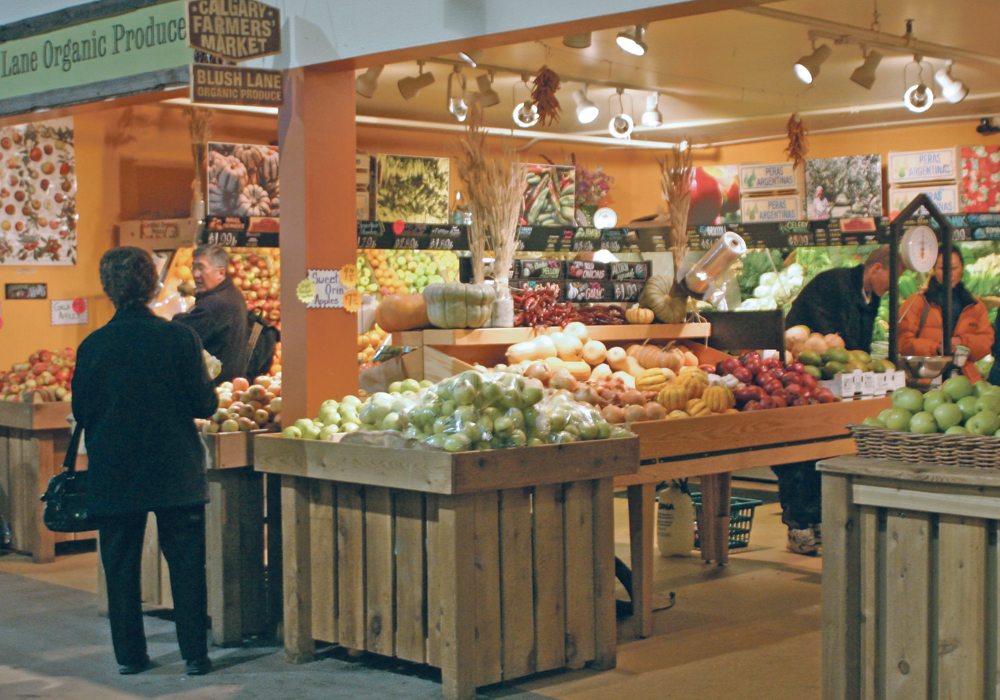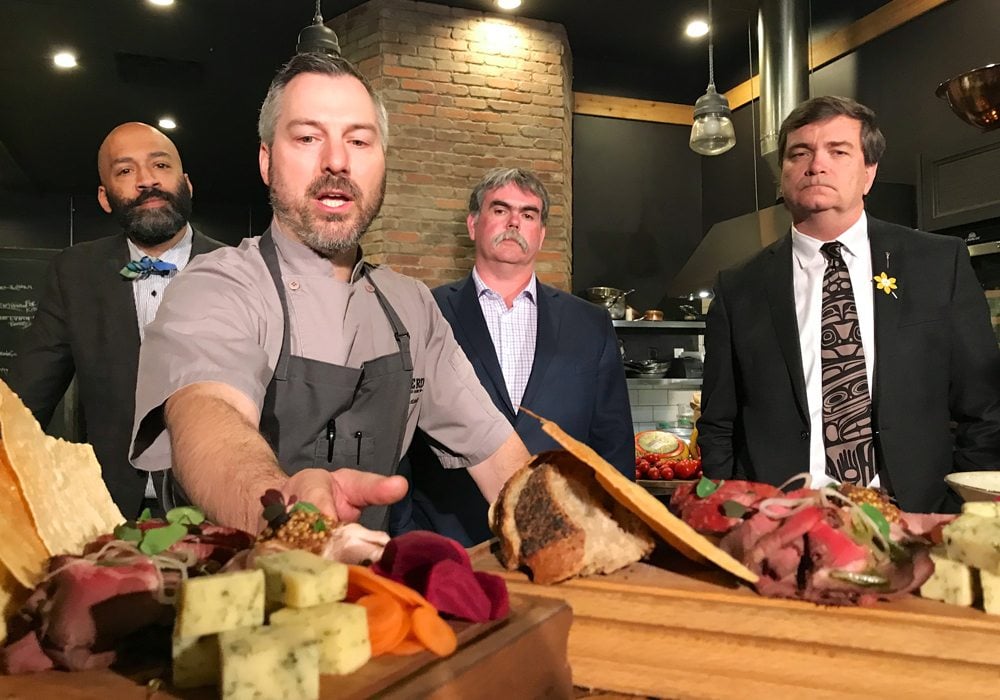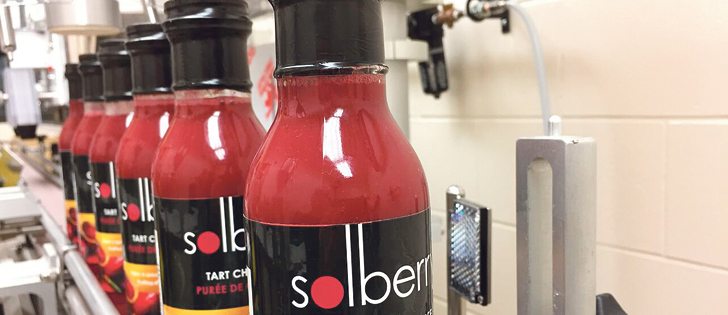COURTENAY, B.C. — Water buffalo cheese, salmon pepperoni and broccoli sprouts are just a few of the unusual items produced in Vancouver Island’s Comox Valley.
The willingness to take a leap of faith on such ventures says a lot about the people who live here: from the dairy farmers who don’t want to milk cows anymore to those seeking to reduce their reliance on imports.
Gary Rolston, a professional agrologist with From the Ground Up, said fertilizer and feed cost 15 to 20 percent more on the island than on the mainland, which has led to an increase in locally produced grass fed beef.
Read Also

Nutritious pork packed with vitamins, essential minerals
Recipes for pork
Vancouver Island produces less than five percent of the beef it eats.
Rolston said many of the early dairy farmers came from Europe and had to find alternatives to chemical fertilizers and learn how to grow high protein feed.
“We can grow forage like nowhere else in the country,” said Rolston, noting that up to six cuts of silage are possible with irrigation.
He said beef production makes no sense on paper, except for farmers who own their land and develop grazing systems. Creating a uniform product is also key in grass fed beef, something area producers are now working on.
The development of the Comox Valley as a food destination was en-hanced through the promotional work of groups such as Comox Valley Economic Development.
“That further strengthened opportunities for local producers,” he said.
The valley, which offers products as varied as fresh vegetables, whiskey and shellfish, may also benefit from water shortages in California. One U.S. company is clearing large tracts of land near Comox, Parksville and Duncan for future horticultural production.
Rolston said intensive agriculture makes better sense for the smaller sized island farms.
“That’s the way we should be going here,” he said. “We’re not a commodity producing area,” he said. “Intensify what is in production as opposed to bringing more land in.”
Rolston said Carmen and Glenn Wakeling’s Eatmore Sprouts is a great success story and a major contributor to the industry.
Carmen Wakeling said she is keen to support local agriculture and greater food security on the island, whose food supply could be compromised by ferry shutdowns.
“I really want to see local producers thrive and survive,” she said.
Eatmore grew from a tiny facility in their backyard in Oyster River, B.C., with two employees to the Courtenay plant and greenhouses that today employ 45 local people. It grows 3,600 kilograms of alfalfa, bean, broccoli and peas sprouts a week for customers across the West.
Wakeling said the business developed from a desire to feed people good healthy food and make the island more self-sustaining. They have received strong support from markets for organic, fresh, raw and vegan food, she added.
“You can do anything you put your mind to but not without people buying your products,” said Wakeling.
She sells to Locals, a popular Courtenay restaurant that has shown what’s possible using in-season, locally available food.
Wakeling said island horticulture is challenged by the weather and freight costs in addition to cheap labour and subsidies in the much larger California horticulture industry.
She said consumers became spoiled by having produce available year round on grocery store shelves.
“We have stepped back from eating what’s available in season,” she said.
“We were not supporting local farmers and they went away.”
She said only 30 percent of the land that could be used to grow food in the Comox Valley is currently being used.
“There is potential to grow more food, and if there’s potential, we need to figure out how to do it,” she said.
Sandra, Val and Gerry McClintock are turning water buffalo milk into cheese, yogurt and eventually gelato as part of their agrifood business plan.
The Comox Valley producers believe the creation of a producer association will help them find and supply markets.
Mozarella made from water buffalo milk is among the many cheeses that Doug Smith has created at the Natural Pastures Cheese Company in Courtenay.
“You have to educate people about what it is, how to eat it,” said Smith, who can be found doing just that at the Comox Valley Farmers’ Market each week.
He made the switch from a family dairy operation on Vancouver Island, where dairy numbers have dropped to 40 today from 140 in the 1980s.
The business’s cheese sales have steadily grown, and Smith is currently studying how to deal with the influx of more subsidized cheese from Europe.
“We will have to be able to compete with it. Cheese consumption won’t go up,” he said.
Smith hopes the local advantage is his ace. He sells 60 percent of Natural Pastures cheese on Vancouver Island.
“Some won’t buy on price alone,” he said.
Rolston advised would-be entrepreneurs to do their research, develop business plans and talk to locals before embarking on a new enterprise.
“There is a critical mass of expertise that allows these people to get in without making big mistakes,” said Rolston.
The hardpan layer under the soil in the valley makes soil too wet in the winter and too dry in the summer, but an investment in drainage tiles could increase the productivity of the land, he said.
Producers should also check out soils and microclimates, such as the 1,650 millimetres of rain seen in Cumberland compared to the 1,000 mm around Comox, and the frost prone areas near Mount Washington, which hamper the growing season.
“The closer you get to the ocean, the better the soils will be and the climate and access to water,” he said.
Rolston cited an increase in wineries but noted that less than 10 percent of the land in the Comox Valley is suited to grape production. Some, such as Coastal Black Estate Winery, are finding success with fruit wines made from Canada’s largest cultivated blackberry acreage.
Contact karen.morrison@producer.com

















